
Are you a family caregiver? These 10 tools could prove helpful
There’s no role more admirable or noble than that of a family caregiver. However, as rewarding as it is, it can also be stressful, exhausting and even overwhelming. Aside from managing their own lives, family caregivers need to help their loved ones with things like meal preparation, bathing, shopping, transportation, managing medical appointments and finances. The responsibilities can seem endless. (Don’t miss these nine sure signs of burnout—and what you can do about it.) To help restore some balance between the role of caregiver and your own personal life, we’ve assembled 10 tools that can save you time, help you manage stress and provide peace of mind.
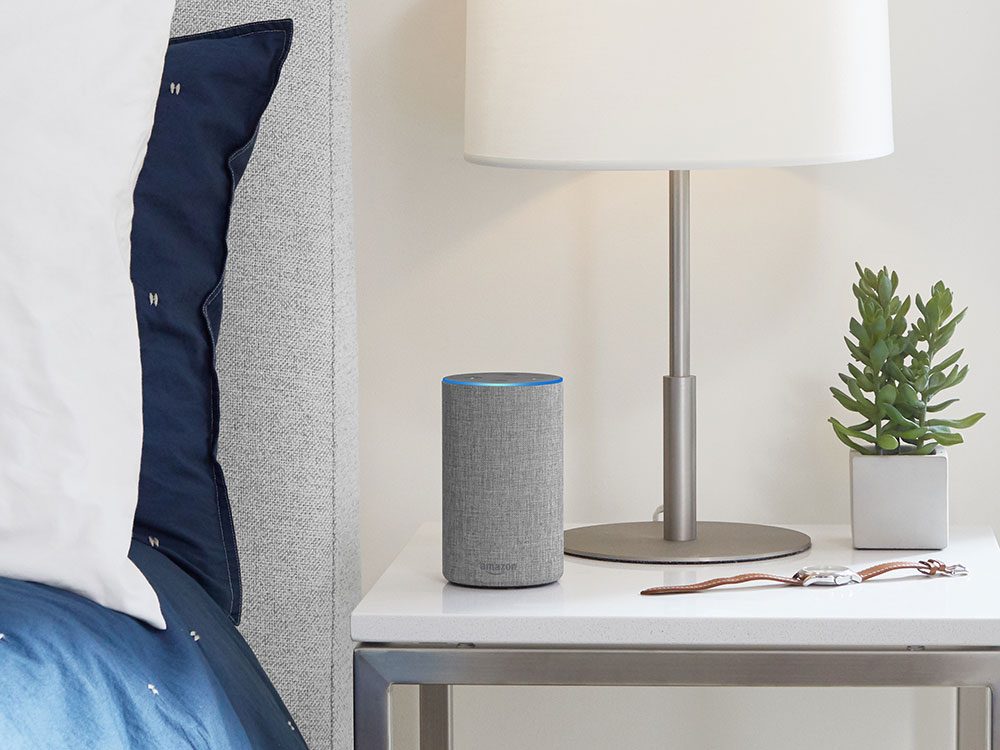
1. Voice first technologies
You may never get the senior in your care to successfully download a smartphone app, but that doesn’t mean that all technological innovations are beyond their grasp. Voice first technologies like Amazon’s Alexa and Google Home have the potential to revolutionize how seniors interact with the latest technology, while alleviating some caregiver responsibilities as well. The implications for daily living can be enormous. Simply by issuing a verbal command, your loved one can order a cab, call family members, set alarms and reminders, get the weather, play music or listen to the news. They can even control the thermostat and lighting levels, affording them a level of independence that might otherwise be impossible. Shown above: Amazon Echo (connects with Alexa), $130, Amazon Canada.

2. Telemedicine
From scheduling appointments, to getting diagnoses and driving to and from the doctor’s office, the time and energy a family caregiver invests in managing medical care can be daunting. (Make sure you avoid these eight common doctor appointment mistakes.) Telemedicine is revolutionizing the delivery of healthcare by providing remote patient monitoring (including checking blood pressure and heart rate) through mobile apps, patient-doctor consultations through video-chat and transmission of images through software (think, a smartphone photo of a mole or rash sent directly to a dermatologist). The potential benefits of telemedicine for the elderly—particularly those with reduced mobility—and for those in remote areas of Canada are huge. Ask your loved one’s doctor if they’re able and willing to employ telemedicine in their practice.

3. Exercise
Family caregivers report higher levels of stress, poorer health and a greater likelihood to engage in unhealthy behaviours to cope with their responsibilities. Staying physically active is critical if you’re to maintain your energy, positive overlook, and overall sense of well-being. You don’t have to pump iron in the gym or sign up for a marathon to reap the rewards of physical activity. Going for a brisk walk or run, engaging in organized sports a few times a week or adding this famously short (but effective) seven minute workout to your routine will help. Don’t miss 10 more ways to work out when you have absolutely no time.
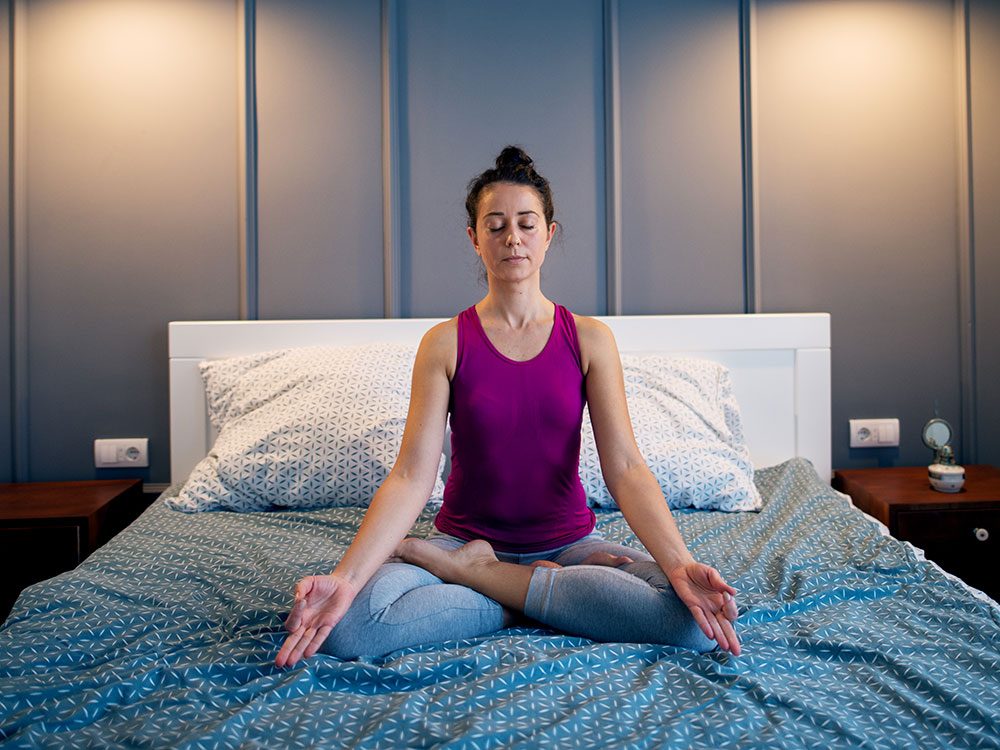
4. Meditation
As previously mentioned, the demands of being a family caregiver can lead to anxiety and even depression. (Don’t miss these eight signs you could be suffering from high-functioning depression.) While you may not be able to control your external environment, you can—to some extent—control your mind. A huge number of studies show that meditation has the potential to boost your health, happiness and productivity, even if it’s only practiced for 10 minutes a day. To get started, explore the meditation apps on your smartphone and try a few sample sessions. Find out how meditation can even help improve your quality of sleep.
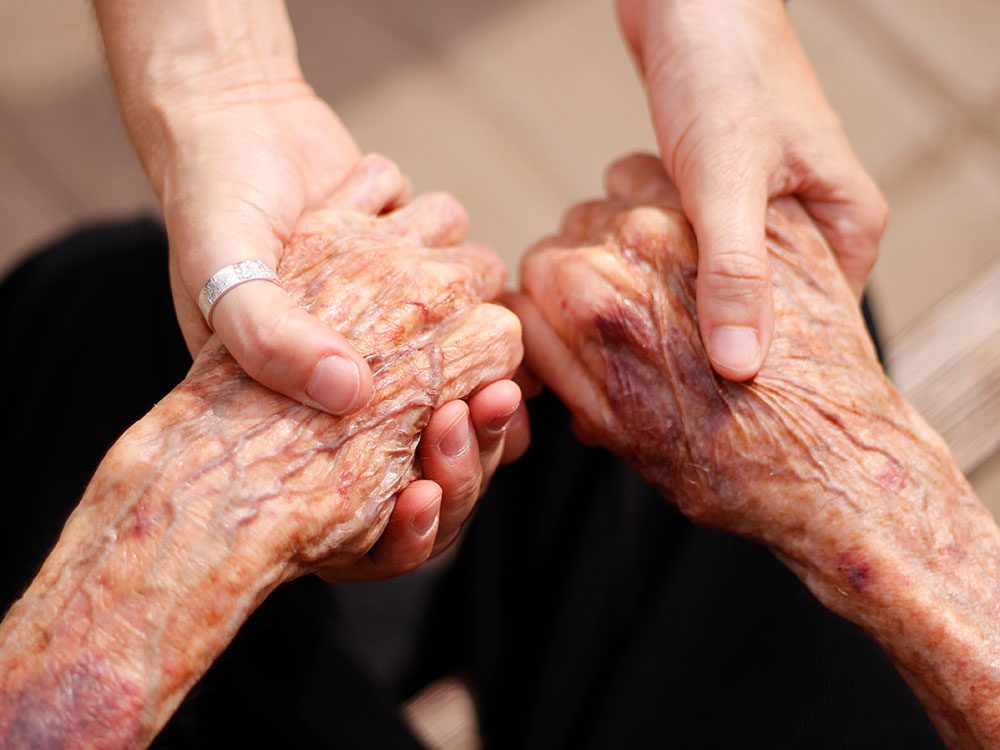
5. Respite care
No matter how demanding your role as a family caregiver may be, you also need time for yourself, whether it’s to tend to other responsibilities in your life, or simply to recharge your batteries. “Respite care” is when you place your loved one in the hands of another family member, friend or support worker for a short period of time to give yourself that much-needed break. You have the option to either arrange for a caregiver to make house calls, or you can temporarily place your loved one in an assisted living situation or nursing home (this is a popular option for family caregivers who need an extended break for a vacation). Check to see if respite care is subsidized or fully-funded through your local health providers and community resources, insurance or health plans. Next, find out why Qualicum Beach is considered Canada’s paradise for seniors.
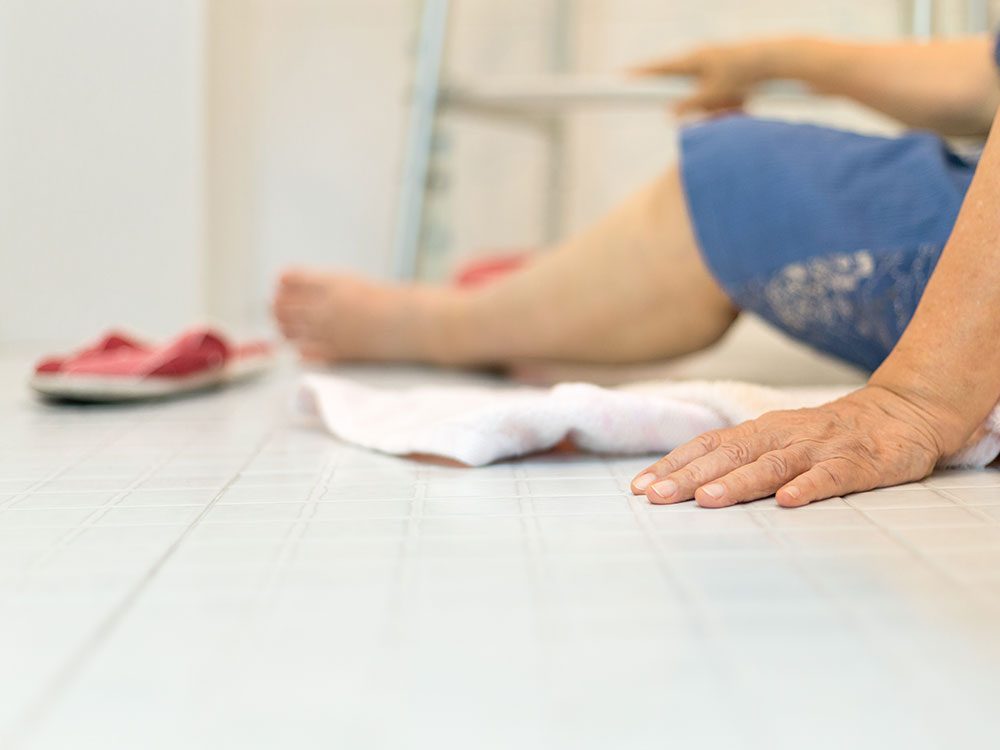
6. Medical alert systems
15-million North American seniors fall each year—and 50 per cent of them can’t get back up on their own. If you’re afraid of leaving your loved one home alone, consider getting a medical alert device. In the event of a fall or medical emergency, the wearer can press a button for help, although most systems now come with automatic fall detection that makes the button redundant. Medical alert systems have actually been shown to extend the length of time your loved one can stay independent and live in their own home by up to five years.

7. GPS tracking
Does your loved one tend to wander and get disoriented, or even lost? Would you feel more comfortable knowing where he or she is at all times? If so, there are plenty of tools to help. You can simply add a GPS app like FollowMee to a smartphone, get a mobile medical alert system with GPS tracking, or invest in a GPS button you can pin to any piece of clothing—an option that’s ideally suited for people suffering with dementia or Alzheimer’s. (Don’t miss this promising new research, which suggests there could be a new drug-free treatment for Alzheimer’s soon.)

8. Video chat
Part of being a family caregiver is ensuring your loved one remains connected with their friends and family. Video chat has made that job that much easier—and more affordable than ever. Whether you use WhatsApp, Facebook, FaceTime or Google Duo, these free video chat options allow for unlimited social interaction—even if the senior in your care can’t leave the house. There’s something to be said for the healing power of a smile and good night kiss from a grandchild!

9. Pill Organizers
Approximately one in 10 seniors admitted to hospital are a result of improper use of medication. (In fact, here are 17 of the most common medication mistakes that can make you sick.) With some seniors taking as many as 10 prescriptions multiple times a day, staying organized is no easy task—even for caregivers. To help bring order to a chaotic medication schedule, ask the pharmacist for a blister pack, like Dispill multi-dose packaging. The medications come pre-filled by dosage by your pharmacist, and are colour-coded by time of day, with blister cells carrying a month’s worth of morning, noon, evening and bedtime doses. Here are four more questions you should always ask your pharmacist when starting a new prescription.
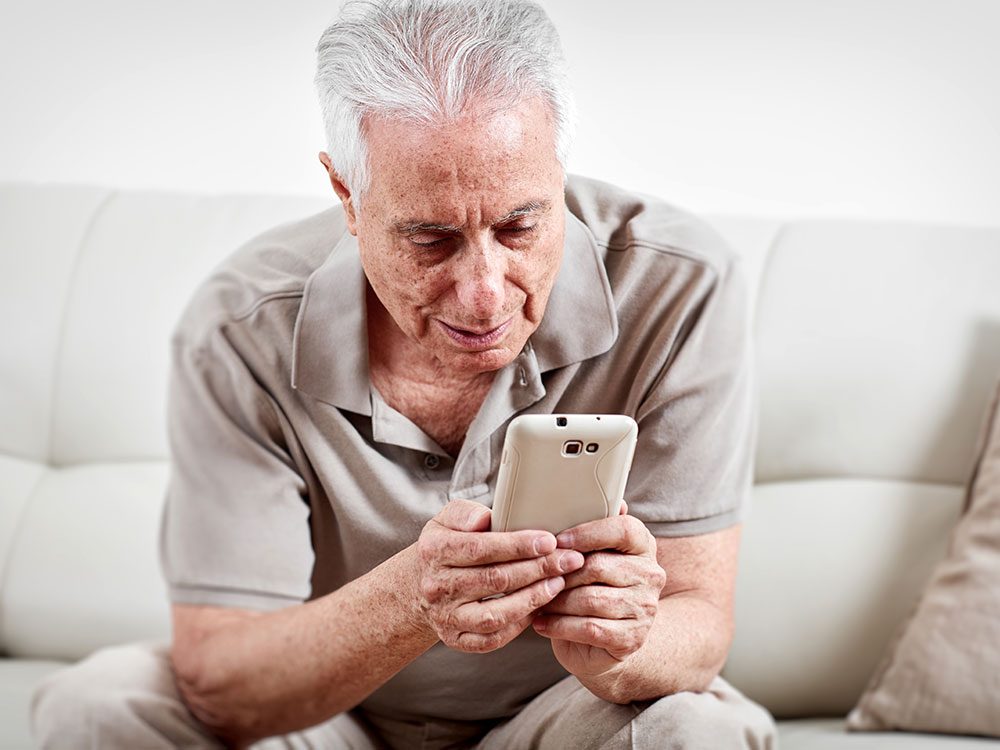
10. Medication Reminders
If you or your loved one is finding it difficult to remember which pills to take and when (not to mention how many!), a medication reminder could be helpful. Mobile apps like Medisafe can keep track of a person’s dosage schedule and issue alerts when it’s time to take a certain prescription, going so far as to display a picture of the pill to serve as a handy visual reference. Some apps also prompt you to confirm when the pills were administered so a record can be kept and reviewed to measure compliance. Don’t miss more helpful hints for Canadians caring for aging parents.